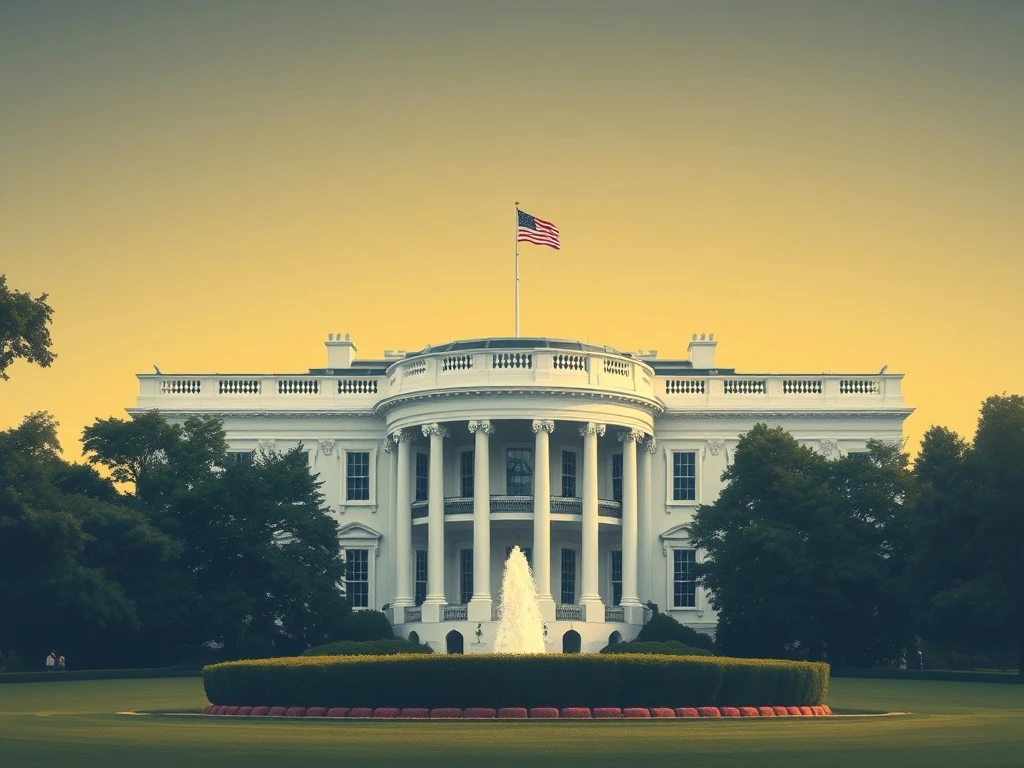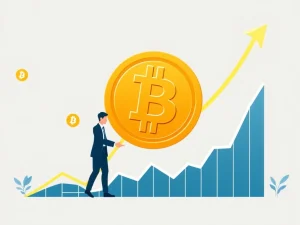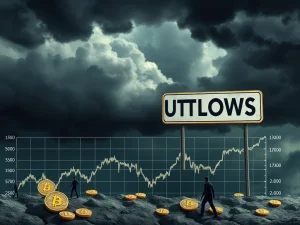White House Crypto Report: Crucial Insights for US Crypto Policy

The cryptocurrency world held its breath, eagerly awaiting the release of the White House’s comprehensive crypto report. Would it usher in a new era of government-backed Bitcoin adoption, or simply offer more bureaucratic prose? For many, especially those championing a strategic Bitcoin reserve, the outcome was a fascinating mix of anticipation and apprehension. This long-awaited document, while extensive, delivered both promising frameworks for future crypto regulation and a notable silence on a key aspiration for Bitcoin maximalists.
White House Crypto Report Unveiled: A Mixed Reception
When the White House finally released its 166-page report on digital assets, it quickly became a focal point for discussion across the industry. The document, a culmination of the President’s Working Group on Digital Asset Markets, laid out numerous policy recommendations spanning various facets of the crypto ecosystem. From banking policies to stablecoin oversight and strategies for countering illicit finance, the report signaled a clear intent to engage with the rapidly evolving digital asset landscape. However, the absence of any concrete updates regarding a proposed Bitcoin reserve left many enthusiasts with a feeling of unmet expectations.
While the broader crypto industry generally welcomed the report as a step towards clearer blockchain policymaking, the specific omission regarding the Bitcoin reserve was a significant point of contention. The report did acknowledge the existence of the Strategic Bitcoin Reserve, established by an executive order back in March, but offered no mention of further development or active purchasing strategies, which some had hoped would mirror approaches taken by nations like El Salvador.
The Elusive Bitcoin Reserve: What Happened?
Just days after taking office, US President Donald Trump signed an executive order establishing the President’s Working Group on Digital Asset Markets, setting a 180-day deadline for policy recommendations. This move, coupled with a general pro-crypto stance from the administration, led many observers to anticipate significant updates to the so-called Strategic Bitcoin Reserve. Bitcoin historian and advocate Pete Rizzo, for instance, had advised followers to “buckle up,” hinting at major developments.
Despite dozens of references to Bitcoin throughout the report, recognizing its seminal role in sparking the entire crypto industry, the Strategic Bitcoin Reserve itself received only a brief mention at the very end. This reference was merely a restatement of the terms outlined in the March 6 executive order, which initially established the reserve and its associated digital asset stockpile.
The Bitcoin community’s reaction was largely one of disappointment. CJ Burnett, chief revenue officer of Compass Mining, a US-based crypto mining hosting firm, expressed this sentiment clearly:
“The absence of any mention of a Strategic Bitcoin Reserve in today’s White House report is a missed opportunity. Markets were watching for leadership and instead got ambiguity.”
Burnett added that this lack of progress creates “unnecessary uncertainty” and risks putting the US behind other countries. Similarly, Bitcoin influencer George Bodine characterized the lack of action as another governmental betrayal of trust.
However, not all reactions were negative. Canadian blockchain and Web3 investor Calvin Ayre offered a more optimistic perspective, noting that the mere inclusion and detailed explanation of Bitcoin in the report was a form of progress. Bitcoin journalist Susie Violet Ward echoed this, stating that the report “represents a clear policy shift. For the first time, Bitcoin is treated as something distinct, quoted, cited, and understood on its own terms.” She highlighted that while details on the Bitcoin reserve were scant, “the fact that Bitcoin is being considered a strategic asset, separate from other digital assets, indicates a clear shift in policy tone.” For many, this recognition alone signifies significant progress.
Shaping US Crypto Policy: New Regulatory Frameworks
Beyond the Bitcoin reserve discussion, the report presents detailed policy proposals aimed at updating crypto regulations. Bo Hines, executive director of the President’s Council of Advisers on Digital Assets, indicated that these proposals are already being implemented in three distinct phases:
-
Demolition Phase: Lawmakers work to dismantle rules enacted during the previous administration.
-
Construction Phase: Lawmakers collaborate with the industry to craft new legislation designed to foster industry growth.
-
Implementation Phase: The process of passing these new laws into effect.
A primary objective of the report was to establish a clear “taxonomy” for digital assets, helping to distinguish between those that might be classified as securities and those as commodities. In line with this, the report recommends that both the Commodity Futures Trading Commission (CFTC) and the Securities and Exchange Commission (SEC) should share oversight over crypto, with the CFTC specifically regulating spot crypto markets.
The report also suggests allowing banks to custody crypto and provide related services to clients, aiming to streamline the process of obtaining a banking charter through more transparent requirements. Taxation, a long-standing point of confusion for crypto holders in the US due to varying classifications across agencies, was also addressed. The administration recommended that “legislation should be enacted that treats digital assets as a new class of assets subject to modified versions of tax rules applicable to securities or commodities for federal income tax purposes.” This could bring much-needed clarity to crypto tax obligations.
Navigating Digital Asset Markets: Towards Adoption
Overall, the administration’s policies and subsequent legislative efforts are geared towards significantly enhancing crypto adoption. The goal is to establish such a robust and integrated framework that a backslide into a more restrictive regulatory environment, akin to what the crypto industry termed “Operation Chokepoint 2.0” during the Biden administration, becomes impossible. Hines emphasized this point, stating, “There’s no way that we’re going to face an Operation Chokepoint 3.0. I think one of the greatest ways to prevent that is through adoption.”
This push for adoption underscores a fundamental shift in governmental approach towards digital assets, aiming to integrate them more seamlessly into the existing financial system rather than isolating them. However, while the path for broader crypto adoption seems clearer, the active pursuit of a substantial Bitcoin reserve remains on hold, at least for the foreseeable future. The report sets the stage for a more structured and supportive regulatory landscape for digital asset markets, even if it didn’t deliver on every hope.
Compelling Summary: What Does This Mean for You?
The White House crypto report is indeed a mixed bag, particularly for ardent Bitcoin advocates who had hoped for an immediate, active Strategic Bitcoin Reserve. While that specific aspiration remains unfulfilled for now, the report undeniably marks a significant milestone. It signals a governmental commitment to providing clear regulatory frameworks, fostering innovation, and preventing future “chokepoint” scenarios for the crypto industry. The detailed policy recommendations concerning banking, taxation, and regulatory oversight by agencies like the CFTC and SEC suggest a maturing approach to digital assets. For anyone involved in cryptocurrency, this report lays out a foundational vision for a more integrated and regulated future, emphasizing adoption as a key deterrent against restrictive policies. The journey towards a fully embraced digital economy continues, with this report serving as a crucial, albeit complex, roadmap.









